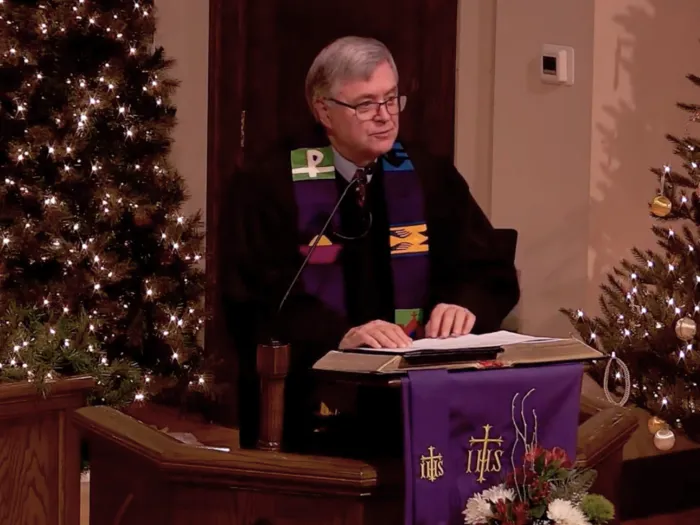‘Who’s my neighbor’ seems like a straightforward question
But in Jesus’ hands, a lawyer’s question helped to redefine the neighborhood
MONTREAT, North Carolina — During Monday’s worship service devoted to compassion, Dr. Margaret Aymer, the preacher for the Presbyterian Association of Musicians’ Worship & Music Conference, made short work of the motives of the lawyer and biblical scholar in Luke 10:25-37 who asks Jesus about eternal life and finds out instead just how large his neighborhood is.

Aymer, the Vice President for Academic Affairs at Austin Presbyterian Theological Seminary, said this lawyer has a simple strategy: Ask the teacher how one acquires eternal life, “and then, when he makes a heretical error, denounce him in front of his followers,” Aymer said. “This man is a combatant seeking to defeat a rival. Nothing he does is compassionate.”
When he asks Jesus about who his neighbor is, “this is a question in search of a boundary, a limit, a strong, impenetrable wall,” Aymer said. On the one side is neighbors we are obligated to love; on the other is those we can ignore, arrest, imprison — even kill, according to Aymer. “The lawyer asks who can I ignore, hate or even oppress and still obtain eternal life,” she said. “This question resonates in our society today.”
In West Ada, Idaho, a teacher had to remove a classroom sign that read, “Everyone is welcome here.” Many people “are throwing up boundaries to that word ‘everyone,’” Aymer said. “Everyone but transgender kids can play sports. Everyone but international students has the right to freedom of speech and assembly.”

Jesus responds to the lawyer’s question with a story, a “tale of three” in the way of the Three Little Pigs or the Three Billy Goats Gruff, where the most important character is the third one. “Everyone was listening to see what the third character would do,” Aymer said. The crowd expected it would be an Israelite, “a regular, faithful Jew,” she said. “But Jesus chose a Samaritan, a deeply shocking choice.” He is “a heretic and a political enemy, and Jesus declares this Samaritan not only saw the injured man, but was moved with compassion.”
Aymer noted the ancient Greek word for “compassion,” “splagchnon,” refers to the body’s bowels or guts, which were considered the source of human emotions. “To put on compassion was to open yourself to the kind of love you could ‘feel in your guts,’ to allow yourself to be moved viscerally,” she said. This Samaritan is thus “gutsy,” she said. “His gutsy compassion compels him to act.”
His compassion “flows out of him without boundaries, borders or rules,” she said. “The Samaritan’s compassion is so gutsy that he springs into action” when he sees someone made in the image of God in need of help.

While the lawyer was looking for limits, “Jesus was handing out to everyone welcome T-shirts and banners,” Aymer said. “Jesus calls for mercy in a way that today we still sometimes virulently reject. Jesus upholds the Samaritan’s gutsy compassionate response to the victim of an ambush.”
According to Aymer, the question was never “What must I do to inherit eternal life?” It was this: "Since you know what God requires, do you have the guts to do it?”
“Let us try again to love our neighbors with the gutsy compassion of a traveling Samaritan,” she said, “for Christ has commanded us to go and do likewise. As God’s holy ones, chosen and beloved, let us fill ourselves with compassion.”

Other worship highlights from Monday included David LaMotte’s “Here for You,” a song he wrote during the pandemic, then added video shot on his cell phone following Hurricane Helene, including the response to the disaster.
Montreat Conference Center President Richard DuBose also spoke about Helene and the devastation it brought. DuBose offered greetings to the 650 or so people who were in worship Monday. “You are seeing some things around Montreat that look a little different than they did last summer,” he said. While Anderson Auditorium was “relatively unscathed,” 18 Montreat buildings suffered damage.
“I can tell you, the Presbyterian Church showed up big time, and not just for Montreat,” DuBose said. The PC(USA) response “is evident in Montreat, Black Mountain, Swannanoa and throughout the region. You are a strong church. We are a strong church,” DuBose told the Presbyterians in worship. “If you need any more evidence of that, see me this week. I have a hundred stories to tell you.”
The Adult Chamber Choir sang “Come to the Water,” composed by John Foley and arranged by Lynda Hasseler. As the choir sang, worshipers were sprinkled with a few drops of water flung at them.
Additional high notes were provided by Dr. Tom Trenney, who played J.S. Bach’s “Prelude in G Major” on the organ as well as Maurice Duruflé’s “Fugue on the Theme of the Soissons Carillon” to close the service. Virtually everyone in worship stuck around for the final notes of Trenney’s soaring postlude.
You may freely reuse and distribute this article in its entirety for non-commercial purposes in any medium. Please include author attribution, photography credits, and a link to the original article. This work is licensed under a Creative Commons Attribution-NonCommercial-NoDeratives 4.0 International License.




